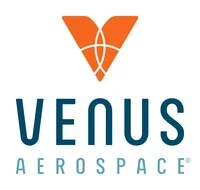
Hypersonic Flight Takes Off: Venus Aerospace Achieves Historic Engine Test, Sparking New Era of High-Speed Travel
A new chapter in aerospace innovation is unfolding as Venus Aerospace, a Houston-based startup, announced the successful completion of the first U.S. flight test of a rotating detonation rocket engine (RDRE) at Spaceport America in New Mexico. This milestone, deemed "historic" by the company’s CEO Sassie Duggleby, could pave the way for hypersonic travel and revolutionize both defense and commercial aviation.
For decades, the idea of a rotating detonation engine has been discussed academically, promising increased fuel efficiency and thrust. Unlike traditional rocket engines, RDREs use a supersonic shockwave sustained by constant fuel and oxidizer injections within a circular channel. While other countries have experimented with the concept, Venus Aerospace's test marks the first high-thrust RDRE flight within the United States.
A Quick But Monumental Flight
Limited information has been released about the test itself, but it's clear this was a significant achievement. A small rocket, powered by a 2,000-pound thrust engine, was launched from a rail and flew for about half a minute. While the rocket didn't break the sound barrier during this test, the successful demonstration validated the performance of the RDRE under real-world conditions.
"By proving this engine works beyond the lab, Venus brings the world closer to a future where hypersonic travel—traversing the globe in under two hours—becomes possible," Duggleby told Ars.
Fueling the Hypersonic Race
This breakthrough comes at a critical time, as the U.S. seeks to close the hypersonic missile gap with China and Russia. A Pentagon report last year stated China has the "world’s leading hypersonic missile arsenal." Startups like Venus Aerospace are pushing the boundaries of aerospace engineering to meet the Defense Department’s demand for super-fast aircraft and missiles.
“This has been such a theoretical engine that lots of folks are so surprised that it’s here and it’s real,” said Sassie Duggleby. “This isn’t a science experiment. It is here, it is now.”
Other companies like Stratolaunch and Ursa Major are also making strides in hypersonic technology. Stratolaunch recently completed two successful test flights of its new hypersonic plane, flying faster than Mach 5 with an engine built by Ursa Major. These advancements suggest a growing momentum in the hypersonic sector, driven by innovation from smaller, more agile companies.
The Future of Flight
Venus Aerospace envisions a future where their RDRE powers commercial planes that can travel at hypersonic speeds, cutting down continent-to-continent flights to just a couple of hours. The company's engine is also designed to work with its exclusive VDR2 air-breathing detonation ramjet, enabling aircraft to take off from runways and transition to speeds exceeding Mach 6.
While the ultimate goal is commercial hypersonic travel, there's significant near-term potential in defense applications. The efficiency of RDRE technology means rockets can travel farther while carrying weapons, making them attractive to the U.S. military.
As Andrew Duggleby, Venus Aerospace's CTO said, “Rotating detonation has been a long-sought gain in performance. Venus' RDRE solved the last but critical steps to harness the theoretical benefits of pressure gain combustion.”
What are your thoughts on the future of hypersonic flight and its potential impact on both commercial travel and national security? Share your opinions in the comments below!